Hey guys, today I’ll be revisiting a tree I began working with in 2019. It’s a collected huckleberry and I’m really excited to share my progress with you guys as the tree has come along quicker then I anticipated. I’ll be including an article in this post that I wrote for the Louisiana Bonsai Society, Baton Rouge club, in 2021. The article more than explains my approach to what maybe one of my new favorite southeast native species to work with. Here’s the article:
“Working with Louisiana native plants has always been a growing interest of mine. I have considered developing an exclusively native collection and I think a strong candidate for that selection of plants would be our native huckleberry. Bald cypress is usually the number one species that comes to mind for most who think of Louisiana native plants for bonsai but there are way more to be had in my opinion. I have heard some, who also practice bonsai, claim that other species in our range are too weak or challenging to create convincing bonsai from. I think with all that they are accomplishing with northwest species nowadays, it is time to bring our own southeast natives into the spotlight. So let us do a little dive into what we know about huckleberry and what their environment is like.
There are two separate species of “huckleberry” native to our range: Vaccinium elliottii (Elliot’s huckleberry) and Vaccinium arboreum (Frackleberry). I will be presenting research on V. elliottii for this article that pertains to its use as bonsai and a containerized life. V. elliottii is more interesting for our practice since it naturally has a smaller leaf then V. arboreum and produces white bell flowers earlier in the spring. This early blooming happens before leaves appear, giving our bonsai a gorgeous and unique look.
V. elliottii is an understory shrub-like plant that loves acidic and wet soils amongst stands of native pines. The leaf litter lowers their soil PH and makes a suitable situation for them to produce fruit. Knowing this about V. elliottii means that we will be treating them with aluminum sulfate to lower PH levels along-side a good balanced fertilizer. Being that they are typically found in the understory, we should keep them in a shady area of our garden so that they do not receive too much sun. I would recommend 4-5 hours of full sun in the spring when it is still cool outside and then full shade in the heat of the summer. This recreates the natural cycle of the canopy trees shading them in the summer and creating a microenvironment they can thrive in.
Side Note: As stated, V. elliottii produces flowers before it is in leaf as it is a fully deciduous tree in our range making it even more of interest for bonsai. Technically, we can treat them like other deciduous bonsai in development but there are a few more things to consider that I have found through working with them.
V. elliottii is in the blueberry family and blueberry are notorious for blueberry stem blight. Many blueberry growers experience the loss of several young bluebe rry plants due to this infection. The infection is typical on blueberry plants that have suffered from wounds due to pruning or mechanical damage. Mechanical damage refers to the plant being moved around too much and disturbing its root system. This presents a unique challenge for us when trying to apply bonsai techniques to V. elliottii.
Upon more investigation into what cases blueberry stem blight, I have found that it is more common in younger or unestablished blueberries. So, this means that we must treat our V. elliottii bonsai with extra care before attempting anything overly stressful on the plant. From my experience working with the species thus far, I have made a few conclusions: for one our V. elliottii should be allowed to fully recover and be growing vigorously before work. Secondly, any large cuts on this species must be treated and sealed properly to prevent dieback or loss of our entire stock.
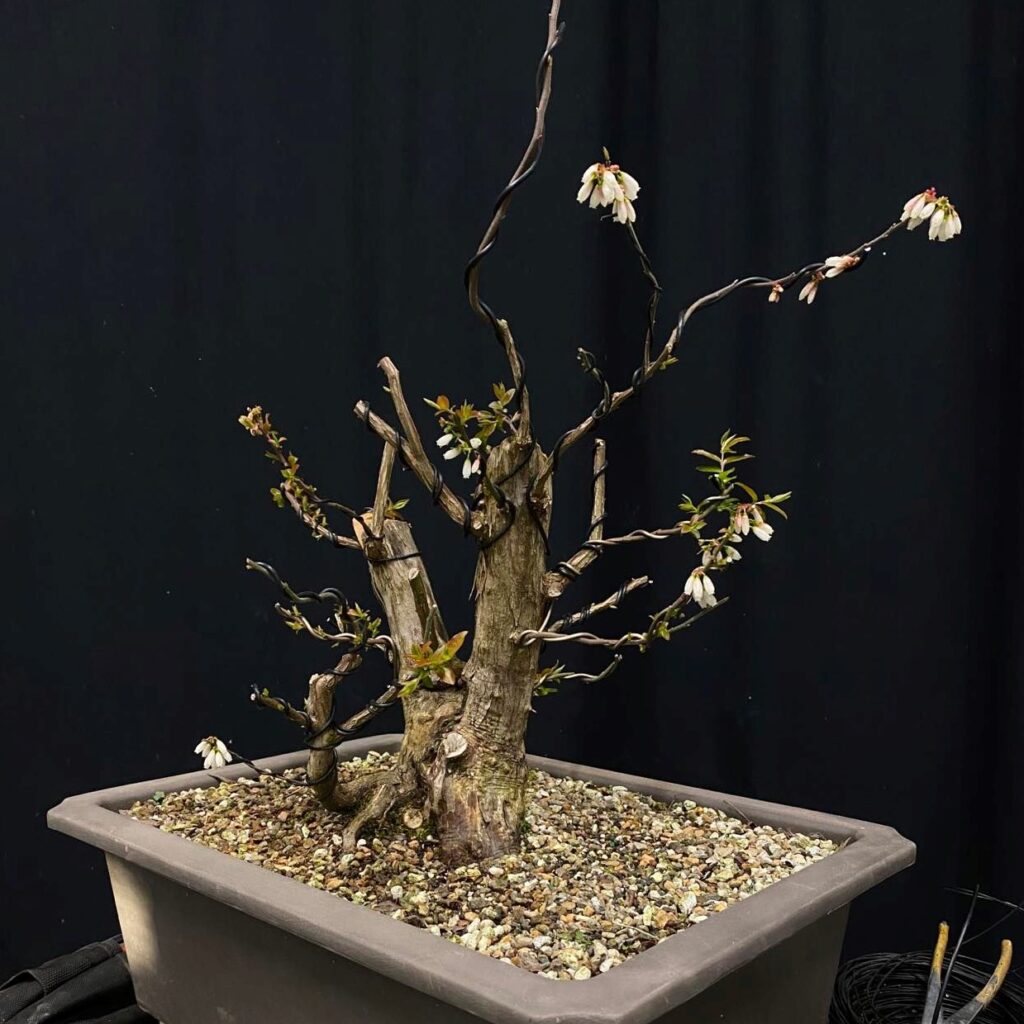
Pictured above is a V. elliottii yamadori — wild collected stock for bonsai — that was collected in early 2019 during dormancy. This picture is from earlier this year, 2021, right after I pulled it from our back nine at the nursery and decided that it was ready to work on. It had previously put on strong shots for the past two years and you can see the remnants of the fall-colored leaves on the soil. It is also well established and has filled most of its containers with dense healthy roots. ALL cuts of any size I have made during pruning and styling this tree have been sealed with a bonsai wound sealing paste to ensure there is less chance for infection. If any branches break during while styling tis tree they would be removed or pruned back to a clean cut.
The picture also shows my choice of the tree’s potential “front”. I chose this front because it presents the widest possible base and interesting nebari. Luckily, there is a nice three-tree-like clump style to be created from this angle as well. I went in and did some light carving on the collection chops on the main trunks to help with taper.
You can see the slight taper I created with carving. I did not carve on this tree like I would on any other deciduous tree that I know can heal wounds of this severity. From my experience thus far, V. elliottii is not a great compartmentalizer and will never fully heal a wound to this extent. The best course of action is to be adamant about sealing open live wood and maybe trying to dress up the wounds with deadwood carving techniques down the line.
As you can see, the tree is putting on its lovely white bell flowers as the new buds begin to emerge. These flowers only developed on last years newest twigs. This is a great sign for the future of this tree as bonsai because that means the twiggier the ramification we will get out of it, the more flowers we should be able to produce each spring!
Side note: This species does produce an edible blueberry and it is quite tasty. Make sure if you want to eat some of the berries from this bonsai that you do not use a system insecticide, or your berries will have a sting to their flavor.
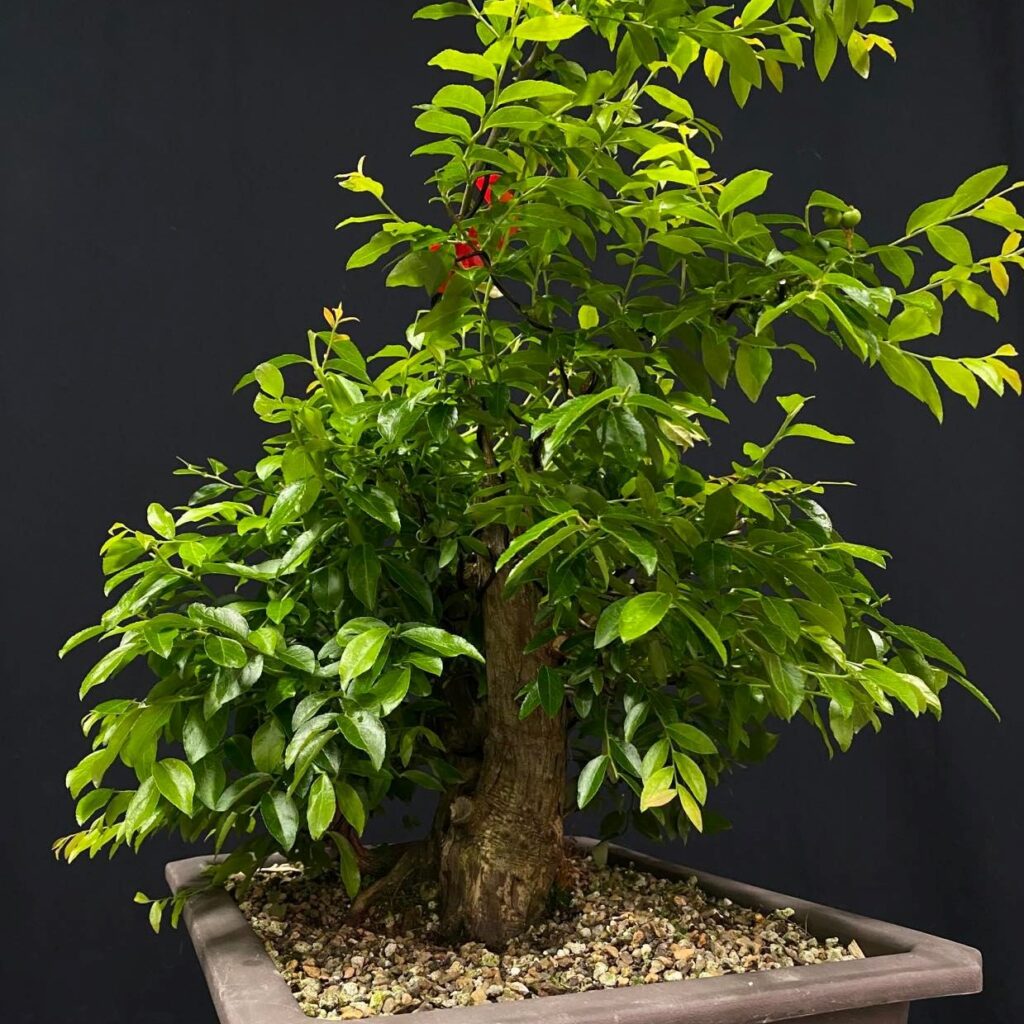
The next picture shows the V. elliottii in full leaf and it is growing very vigorously. If you look closely there are berries in place of the flowers now. I will remove the berries for now to encourage more foliage growth. I can always enjoy the fruit later down the line once I build the bones for my bonsai.
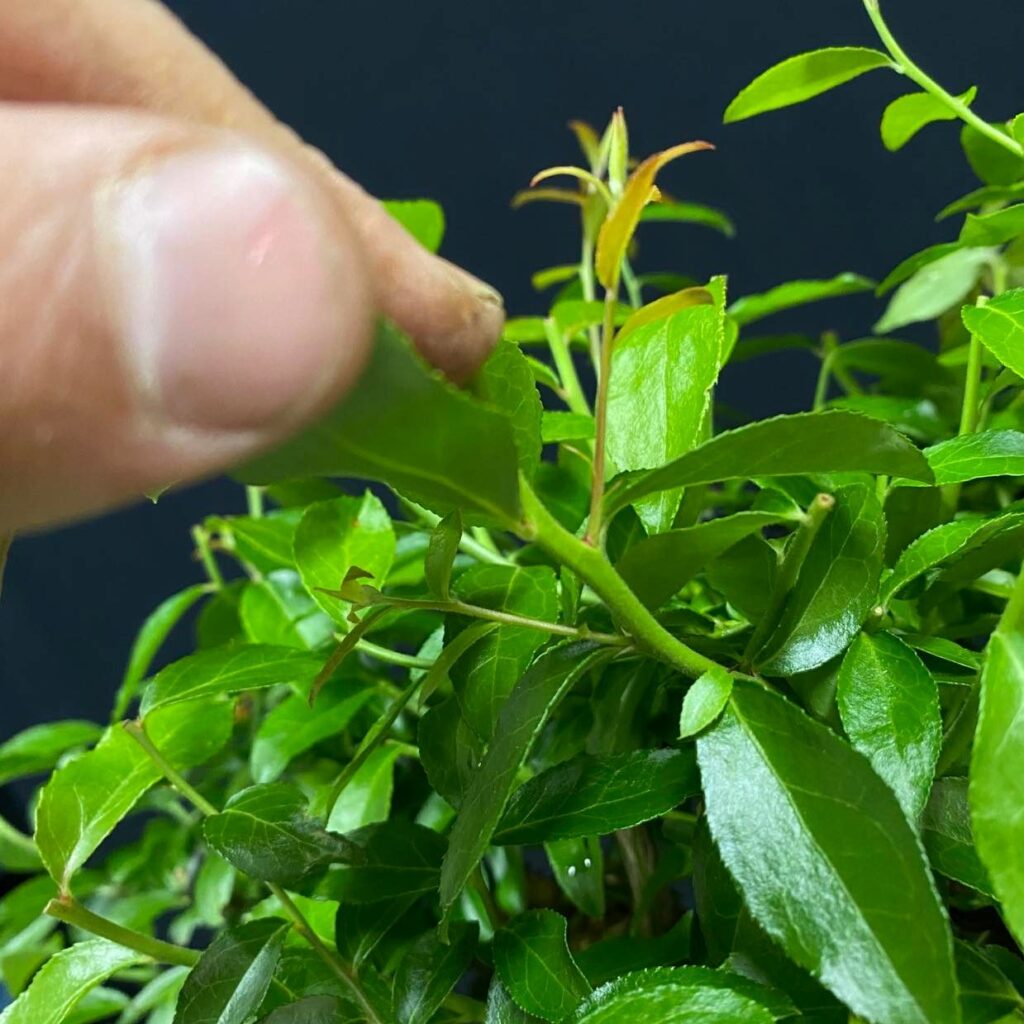
I did a light trimming on the tree and did not make any hard prunes like how we would treat a Japanese maple during the growing season. Instead of the dreaded dieback for the twig blight, in return I was greeted by back budding of auxiliary buds. These are the buds that exist at the base of each leaf along a branch. I did not know this species was capable of this type of back budding and it was a great result.
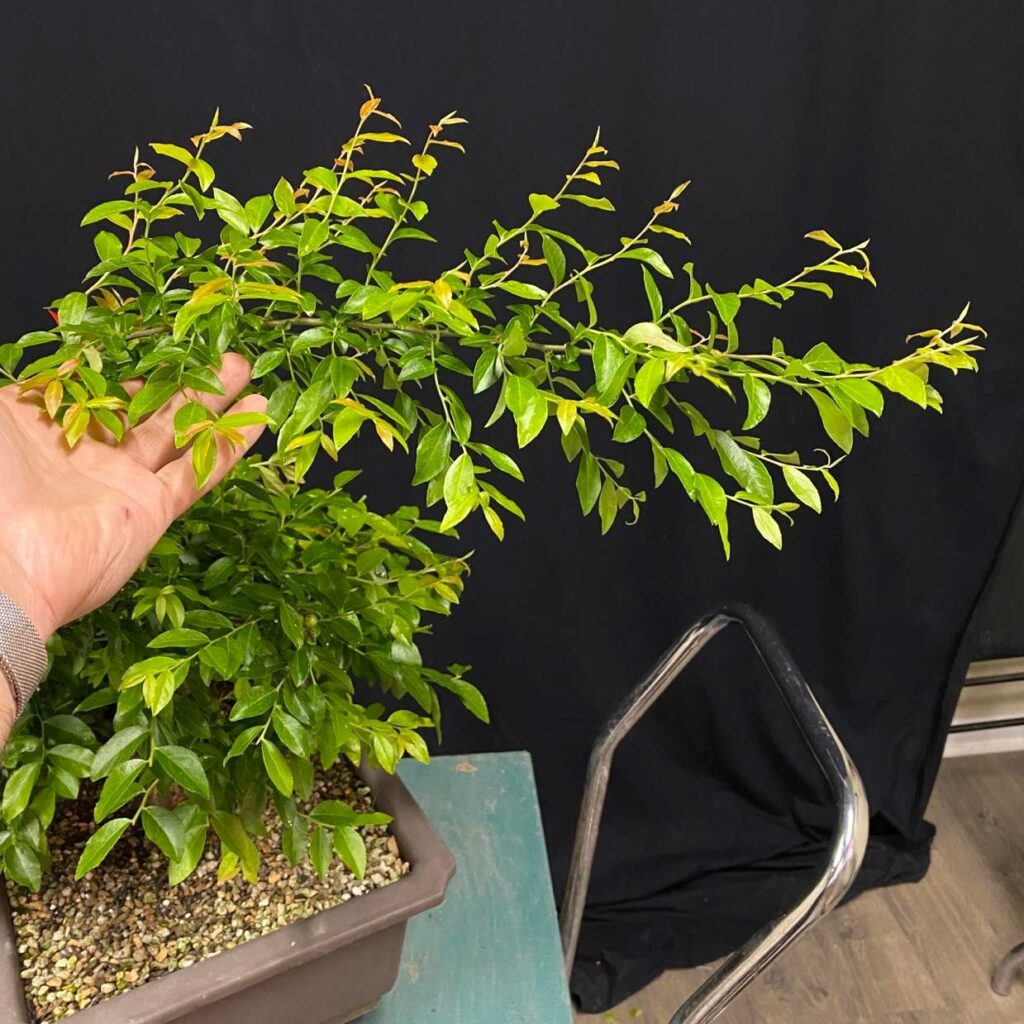
The leader of the tree is being allowed to grow and improve the transition and make the taper more believable, but I am not sure how long this will take. When digging V. elliottii for yamadori collection, I found that there was a vast variance in trunk size and heights of each one I found. This may have to do with individual plant locations and interactions with local wildlife. Plus, we have to account for the fact that understory trees in Louisiana get a lot of abuse, either from human intervention or other larger trees falling on them. For now, I will fertilize and let the top grow freely and report my results throughout the years to come.” (This article was written some time ago and now it’s time for the results!)
I actually found a picture in my phone of the spring right when the huckleberry was collected. Here it is as just a stump.
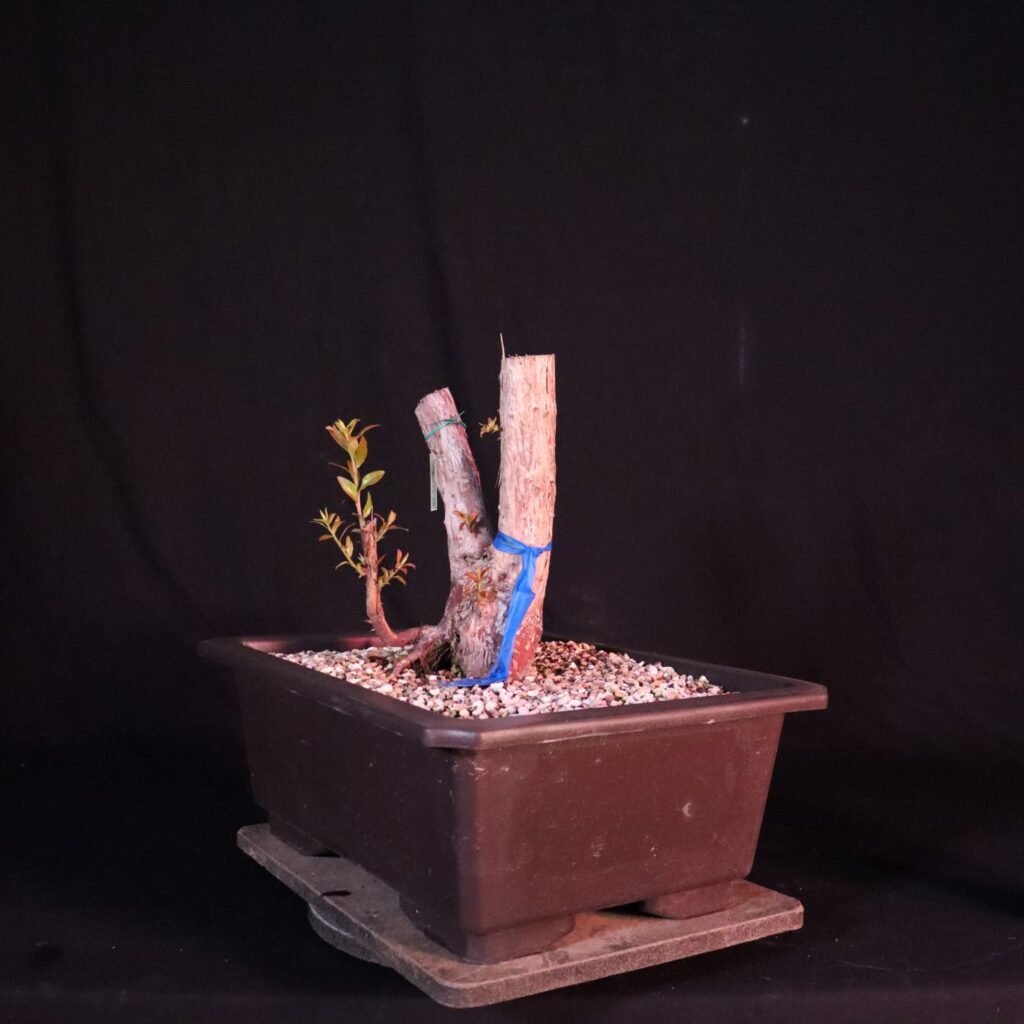
And here it is just 3 years into development.
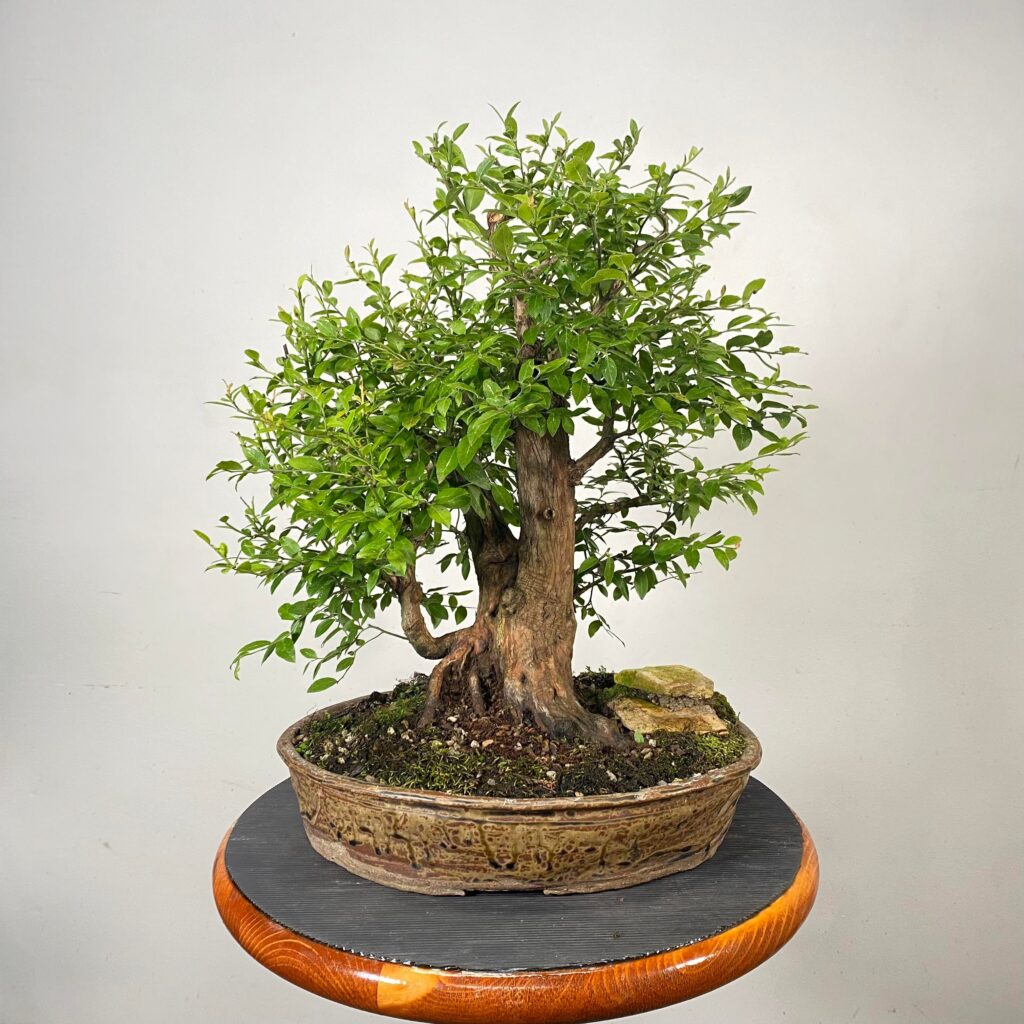
I repotted it into a oval container I made in college. I felt the weird wild nature of the tree fit the primitive shape and ash glaze of the pot quite well. I added the pieces of petrified wood on the right side to add a penjing element to the planting. Depending on how cheeky I’m feeling I’ll put a mudman on the petrified wood. This tree still has a look ways to go as far as refinement and develop of the canopy. There is a bald spot on the top left of the silhouette and a thin branch structure on the bottom right. Those issues can be resolved by cut and grow techniques for this point on.
Things I learned thus far with the little bonsai journey about our native huckleberry:
- You can indeed prune them without fear of twig blight
- They back bud very well if not similar to elms
- Thickening the transition, the new top leader, only took two years
- They have a very fibrous rot system and reduce really easily
- The leaf size also reduced beautifully from 1 1/2″ down to less then an 1″
Until next time,
-Evan
